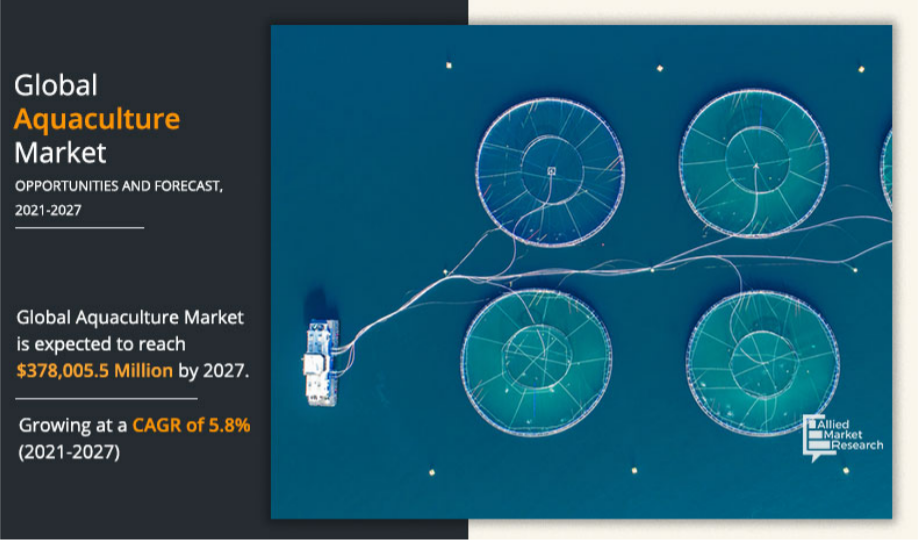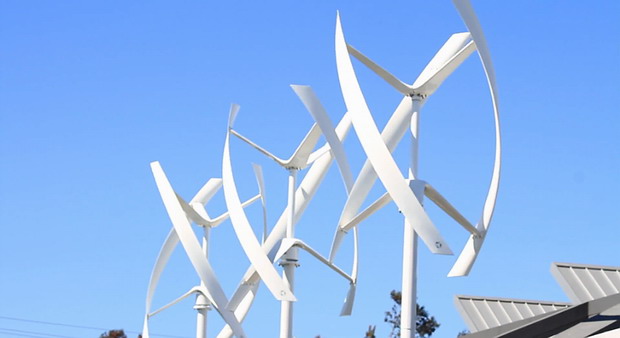
The global aquaculture market size was valued at $285,359.7 million in 2019, and is
projected to reach $378,005.5 million by 2027, registering a CAGR of 5.8%. The others
segment is expected to retain its dominant position, in terms of revenue generation,
throughout the forecast period. Asia-Pacific held a leading position in the global market
in 2019, and is expected to maintain its dominance in the future.
Aquaculture is term used to define the activity of fish farming. This farming procedure
involves interventions in rearing process to enhance production, such as regular
stocking, feeding, and protection from predators. Aquaculture farming involves 580
species that are currently farmed all over the world, representing a wealth of genetic
diversity both within and among species. Aquaculture is practiced by some farmers in
developing countries and by multinational companies that can hold ownership of the
stock being cultivated. Eating fish is part of cultural traditions of many people and in
terms of health benefits, it has an excellent nutritional profile. It is a good source of
protein, fatty acids, vitamins, minerals, and essential micronutrients.
Fish is included in the category of products that is purchased by consumers frequently.
Hence, the demand for such products remains consistent among consumers. The
outbreak of the novel coronavirus has significantly affected the growth of the market
worldwide. There has been slight decrease in sales of fish products due to the
disruption of the supply chain and reduction in the out-of-home consumption of food
during the COVID-19 pandemic. However, the at-home consumption of fish has
increased and is expected to increase profitability of this market in the coming years.
The growth of the aquaculture market can be attributed to changes in the food
consumption pattern of people all around the world. The expansion of retail market
and easy availability of the product through various sales channel make it convenient
for consumers to purchase packaged aquaculture, which drive the sales figures.
Currently, aquaculture is an absolute necessity to meet food demand and supply. This
industry provides high-quality and disease-free fish by rearing fish in an environment
that meets hygiene standards. Aquaculture activity is also utilized by industries to
conserve species that are on the verge of extinction. However, rise in the adoption of
veganism and stringent law implemented against animal cruelty act as the major
restraints of the global aquaculture market. On the contrary, rise in popularity protein
rich diet is expect to open avenue for the global aquaculture market.
The global aquaculture market is segmented into environment, fish type, and region.
The environment segment includes marine water, fresh water, and brackish water. On
the basis of fish type, the market is divided into carps, mollusks, crustaceans,
mackerels, sea bream and others (pompano, snappers, groupers, salmon, milkfish,
tuna, tilapia, catfish, sea bass, and a diverse group of aquatic animals that dwell in
oceans as well as in freshwater). Region wise, it is analyzed across North America (the
U.S., Mexico, and Canada), Europe (Russia, Norway, Iceland, and rest of Europe), Asia-
Pacific (China, the Philippines, Japan, Indonesia, Vietnam, Australia, and rest of Asia-
Pacific), and LAMEA (Latin America, the Middle East, and Africa).
Aquaculture Market
By Environment
Based on aquaculture market forecast by environment, the fresh water was the highest revenue-
generating segment, accounting for a major share in 2019. The fresh water segment is expected
to witness highest growth of 5.9% during the forecast period, followed by the marine water
segment at 5.8%. The growth can be attributed to rapid expansion of aquaculture as a viable
alternative to wild fishing.
Aquaculture Market
By Specie
Based on the aquaculture market analysis by fish type, the others segment generated maximum
revenue in 2019. The dominance of this segment can be attributed to hardiness and adaptability
of these fish encouraging widespread domestication globally. Moreover, rise in demand for fish
in the dietary nutrition sector to produce omega-3 supplements further propels the aquaculture
market growth.
Aquaculture Market
By Region
Based on the region, LAMEA was the second largest market, in terms of revenue
generation, with almost one-fourth share in 2019. This region is further expected to
expand at a CAGR of 5.6% during the forecast period. In North America, aquaculture
has ceased expanding in recent years, however, in South America it has shown strong
and continuous growth, particularly in Brazil and Peru. Technological developments in
South America and some countries in South Africa are expected to increase growth of
the aquaculture market in LAMEA. Moreover, rapid development in the Middle East, in
terms of infrastructure and technology result in growth in the LAMEA market. However,
weak economies in Africa hamper growth of the aquaculture market in this region.
The players in the aquaculture industry have adopted such as acquisition, partnership
& agreement, merger, and geographical expansion as their key development strategy
to increase profitability and improve their stance in the aquaculture market share. The
key players profiled in the report include WH Group, JBS S.A., Smithfield Foods,
Triumph Foods, Danish Crown, Tyson Foods Inc., Tönnies, Yurun Group, Vion Food
Group Ltd., and Shuanghui Development.
Key Benefits For Stakeholders
The report provides a quantitative analysis of the current aquaculture market
trends, estimations, and dynamics of the market size from 2019 to 2027 to
identify the prevailing opportunities.
Porter’s five forces analysis highlights the potency of the buyers and suppliers to
enable stakeholders to make profit-oriented business decisions and strengthen
their supplier–buyer network.
In-depth analysis and the market size and segmentation assists to determine the
prevailing aquaculture market opportunities.
The major countries in each region are mapped according to their revenue
contribution to the market.
The market player positioning segment facilitates benchmarking and provides a
clear understanding of the present position of the market players in the
industry.
Key Market Segments
By Fish Type
o Carps
o Mollusks
o Crustaceans
o Mackerel
o Sea bream
o Others
By Environment
o Marine Water
o Fresh Water
o Brackish Water
By Region
o North America
U.S.
Canada
Mexico
o Europe
Russia
Norway
Iceland
Rest of Europe
o Asia-Pacific
China
Philippines
Japan
Indonesia
Vietnam
Australia
Rest of Asia-Pacific
o LAMEA
Latin America
Middle East
Africa


